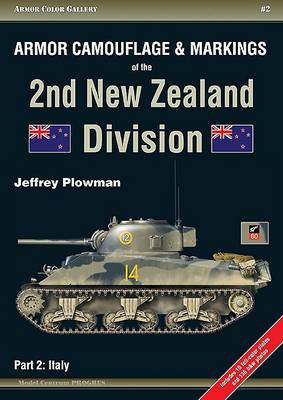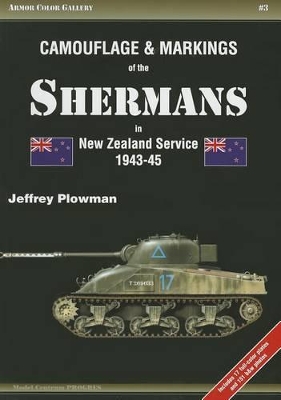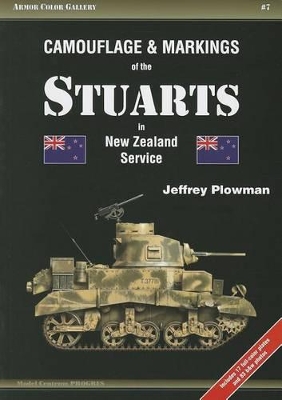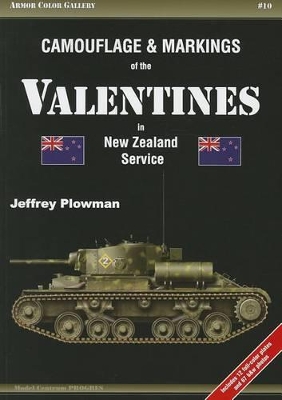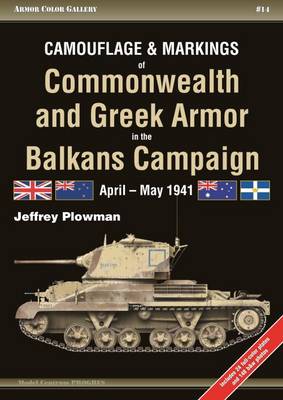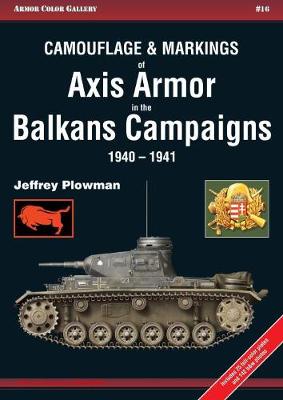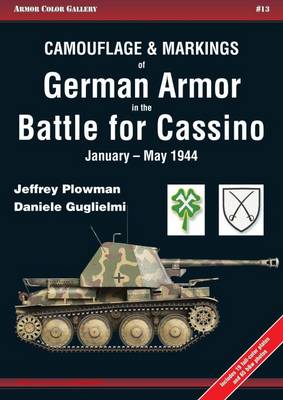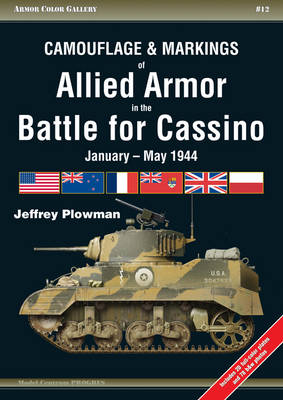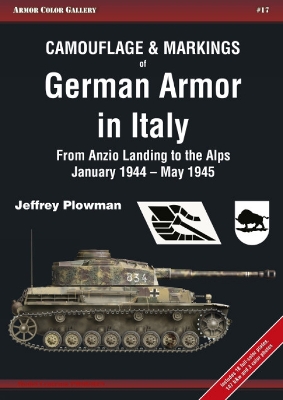Armor Color Gallery
4 primary works • 9 total works
Book 2
Armor Camouflage & Markings of the 2nd New Zealand Division, Part 2
by Jeffrey Plowman
Book 3
Camouflage & Markings of the Shermans in New Zealand Service 1943-45
by Jeffrey Plowman
Book 7
Camouflage & Markings of the Stuarts in New Zealand Service
by Jeffrey Plowman
Book 10
Camouflage & Markings of the Valentines in New Zealand Service
by Jeffrey Plowman
Camouflage and Markings of Commonwealth and Greek Armor in the Balkans Campaign
by Jeffrey Plowman
Camouflage and Markings of Axis Armor in the Balkans Campaigns 1940-1941
by Jeffrey Plowman
To put together this book the author has collected a remarkable set of photographs from public and private archives in Hungary, Italy, Croatia, Slovenia, Serbia, Poland, Australia, the UK and US as well as Germany. Covering a wide variety of armored vehicles fielded by the Hungarian Motorized Corps, the Italian 131 Divisione Corazzata "Centauro", five German Panzer-Divisions and two Sturmgeschutze Abteilungs, this book includes many rare and never before published photos of early war Axis armored vehicles, with very detailed captions. Most of these photos would never have seen daylight without online markets.
It includes: PzKpfw I, II, III and IV tanks, SdKfz 221, 222 and 231 armored cars, SdKfz 251 and Sdkfz 253 halftracks, StuG IIIs, Toldi tanks, Csaba armored cars, M13/40 tanks and L3/33 tankettes.
Camouflage & Markings of German Armor in the Battle for Cassino
by Jeffrey Plowman and Daniele Guglielmi
Camouflage & Markings of Allied Armor in the Battle for Cassino
by Jeffrey Plowman
Covering American, British, Indian, Canadian, French, New Zealand and Polish armor, this book includes a number of rare and unpublished photos with detailed captions with 56 pages including 8 in full colour.
It includes: M3A1 Scout Cars, Universal Carriers, Indian Wheeled Carriers, M8, HMCs, M10s, M7 Priests, Stuarts, Shermans, Churchills, Grant ARVs, M31, TRVs and Valentine Bridgelayers. Contains: 56 pages, 78 b&w photos and 20 full color plates of artwork.
Praise for Camouflage& Markings of Allied Armour in the Battle for Cassino:
'With so much variety of types and color schemes, this is a great choice for modellers as well as those interested in armoured warfare' - Peter Brown, Military Modelling, July 2014
The Sturmpanzer 43 or Brummbar, an infantry support self-propelled gun, also made its appearance on this occasion. As the Germans continued their retreat up the Italian peninsula, vehicles such as Sturmgeschutz IVs, Jagdpanzer IVs and Hetzers were added to their inventory. The Germans became more dependent on Italian armor, bringing into service some of the higher performance Semovente assault guns.
Concurrent with this was the deployment some of their obsolete types with police units in the rear areas, often in anti-partisan operations. These included the PzKpfw III Ausf. N with its 75 mm L/24 gun, the Italian AB41 armored car and P 26/40 tank, along with some Russian T-34/76 tanks. This proliferation of vehicle typesalso saw a move away from the overall Dunkelgelb finish that seemed to be predominant in the earlier engagements in Italy. This saw the use of Olivgrun, Rotbrun or both in a variety of patterns, something that had started to happen at Cassino. Italian armor taken into service usually retained its factory scheme of Dunkelgelb, Olivgrun and Rotbrun, but some units repainted them with a scheme of their own.
